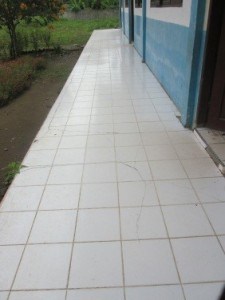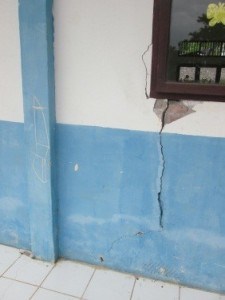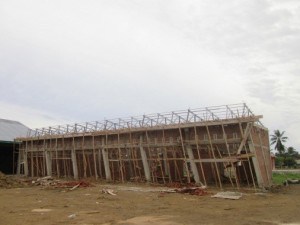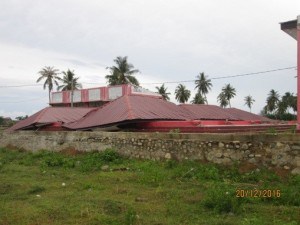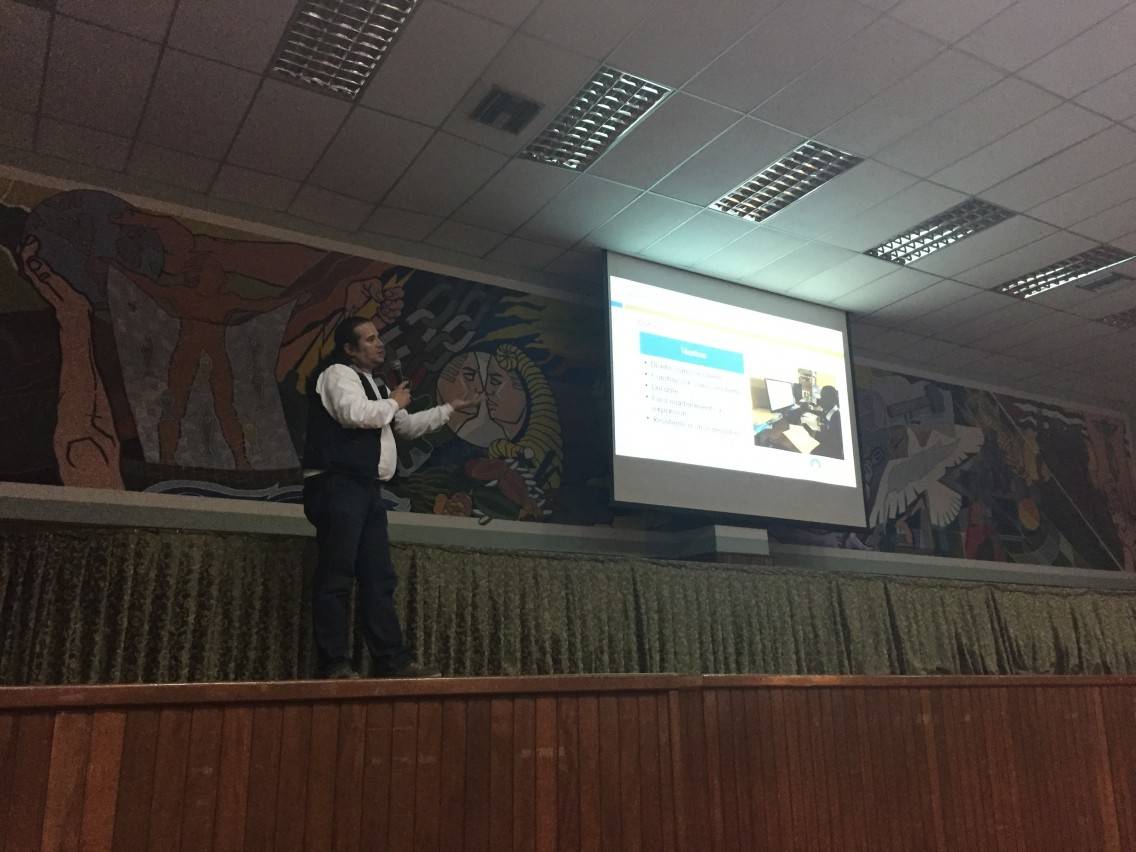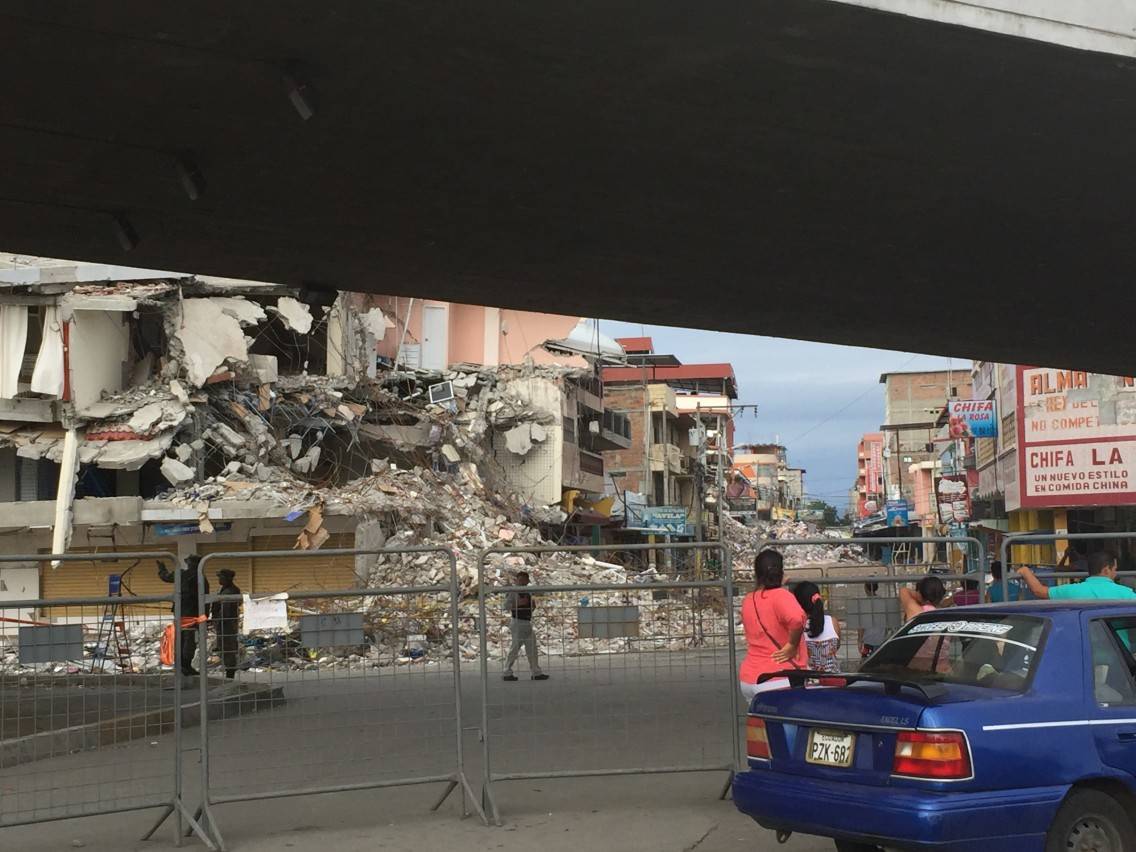From February 23 to February 25, 2017, Carl and Linnel from our engineering team in the Philippines performed post-earthquake reconnaissance following the 6.7 earthquake in Surigao Del Norte, on the north side of the island Mindinao. The team investigated and documented the response of rural school buildings and informal urban housing in the area, which will help inform our retrofit efforts in Manila and further our understanding of the seismic vulnerability of school buildings. The highest concentration of damaged housing exists in Surigao City,
Damages from the Pidie Jaya Earthquake: School Assessments and Checking in on Build Change-advised Houses
Day 4 – 22 December 2016 in Pidie Jaya District
Today we had a chance to join the government team that conducts assessments for school buildings. Their team is divided into three groups, each with an engineer from the Ministry of Public Works, and a representative from each of BPKP (Financial Investigation Agency of Aceh Province), BNPB, and DepEd Pidie Jaya. The team will assess 54 schools that are reported to have high or moderate damage by the school staff.
Aceh Earthquake Response Day 3: Brickmakers and Damaged Buildings in Meredeu & Bandar Baru Sub-districts
Today we visited two more affected sub-districts in Pidie Jaya. In the morning we went to Bandar Baru sub-district and visited two schools. The buildings are confined masonry, and include teacher housing. Walls have collapsed in a few of the classrooms and the library building.
The damage that we found in those two schools are quite similar to the damage at the schools we visited earlier in the week: cracks in the walls near windows and doors,
Damages from the Pide Jaya Earthquake Day 1: Bieruen District
Our reconnaissance team is composed of 3 Build Change staff and our driver Danu. Danny is the technical team leader for our current better brickmaking program in Lubuk Alung, West Sumatera. She also led the technical team in our previous technical assistance program in Aceh Tengah in 2015. Elwahyudi is a technical supervisor who is also currently involved in the better brickmaking program with Danny.
We left Sunday at noon from Padang and flew to Medan.
After Hurricane Matthew: Investigating Housing and School Damages in Beaumont & Les Cayes
Today we visited the city of Beaumont located between Jeremie and Camp Perrin in the mountains. We met the Mayor of Beaumont, who described a similar situation as that in Moron. The main street of the town was not very affected by the hurricanes. The majority of the houses and commercial shops are made from unreinforced masonry with heavy roofs. We went with a municipal agent to visit the outskirts of the town.
After Hurricane Matthew: Assessing Damages in Moron
Today we drove from Jeremie toward the mountains in the middle of the Grande Anse department. On the bumpy road along the Grande Anse River we saw dozens of houses with heavy damages from the hurricane. The houses are mainly constructed with a wood frame and stone masonry. The wind force shocked the buildings, provoking the fall of the top corners of some walls and cracks near the column joints. The use of mud mortar to place the stones is insufficient to tie the stone together well.
Day 3 & 4: Manta, Crucita and Portoviejo- A Look at Mixed Use Buildings and Sharing Knowledge
On May 3rd, we went with Gen. Ruiz and Ing. Flores into the barricaded area of Manta, the neighborhood of Tarqui. This area had the most damage and was a mix of large to small commercial buildings and hotels, plus multi family and single family houses (some mixed use).
Many of the small and medium sized buildings that had collapsed were already demolished and some were being taken down while we were there.
Day 2 (Part 2): Canoa and Jama- Analysis of Damaged Homes and Schools
After Canoa, we next headed north to Jama, another coastal town. In Jama we selected a street in town and compared the building type and performance of each, one-by-one. There were 7 houses, some with commercial space below. Six houses were wood framed, 2-stories, and one was reinforced concrete, 3-stories.
Of the wood framed, 5 had masonry infill at the ground floor and 1 had bamboo lath with plaster overlay at the ground floor.
Day 2: Canoa and Jama- A First Look at Damaged Schools
This morning we met with Ing. Hermel Flores, owner of Hermel Flores Construcciones and former chair of the Ecuatorian Chamber of Construction, and General Florencio Ruiz Prado, Director of Citizen Security for Manta, in Manta. We discussed our activities, the situation and the presentation they coordinated for us to give on Tuesday and Wednesday, in Manta and Portoviejo, respectively.
Ing. Flores traveled with us next up north towards the epicenter. The coast of Ecuador is in the highest seismic zone of the country.
Day 1: Guayaquil to Manta- A First Look at Damaged Houses
May 1st was our first full day in Ecuador, after landing in Guayaquil on April 30. Our team has three members: Traveling from our Bogota office there is Juan Caballero, architect and Director of Programs and Partnerships for Latin American, and Walter Cano, structural engineer and Project Engineer for Colombia. From the U.S./headquarters there is Lizzie Blaisdell, structural engineer and Director of Engineering.
In Guayaquil, we saw little evidence of an earthquake. According to the preliminary report on the Instituto Geofisico website (http://www.igepn.edu.ec/) a strong motion sensor near Guayaquil,

